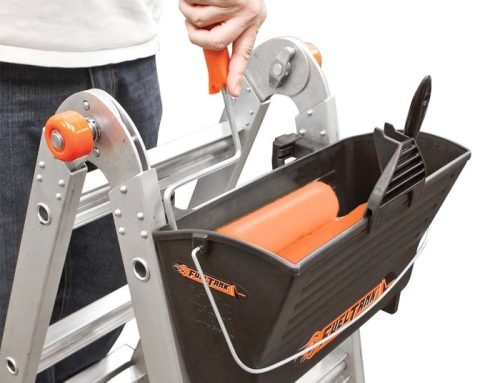All height
access equipment must conform to very stringent safety standards in order to be
released to the market. Inferior
equipment causes accidents and a fall from height is often life changing, if
not fatal. The best way to be sure
you’re using equipment which meets these standards, is to buy known brands from
a reputable supplier like us. We like a
bargain as much as the next person, but buying a ladder that’s “fallen off the
back of a lorry” is a false economy and an invitation for an accident to
happen.
Ladders and
other height access equipment have their own safety codes. For ladders it’s EN 131 and for mobile
scaffold towers it’s EN 1004 (other equipment has specific codes which you can
find out about on the Ladder Association website), so this is the
marking you’re looking for on a ladder.
No ladders should carry a CE mark, as this is not the correct safety
standard and a very good indicator that the product is inferior.
It was the
presence of a CE mark that tipped off Trading Standards officers, at the Port
of Felixstowe, earlier this year when they inspected a shipment of telescopic
combination ladders. They sent some of
the suspect ladders to Test & Research Centre, the experts for testing
products against safety standards.
Several tests are done on ladders to ensure they are safe for use, from
a visual inspection which looks for certain features like non-slip rungs, safe rung
catches and proper instructions and markings, to strength and fatigue tests
which place the ladder under the loads it will be expected to bear.
The team
picked a selection of challenges to subject the suspect ladders to; one of the
easiest tests involves measuring the dimensions at the base because ladders
must have a standard width in order to provide a stable base. The spacing
between the rungs must also be consistent so the user can get into a
comfortable rhythm when ascending or descending. These telescopic ladders failed on both counts.
The non-slip
surface on the rungs was present when the ladder was in a stepladder position,
but disappeared when extended to the full length because one side of the ladder
was then upside down. A good ladder
manufacturer would not make this design flaw.
Testers also managed to disconnect the rungs from the stiles by hand,
which is a major defect and a sign the ladder is unsafe.
Stress tests
which put load on the ladder at various points and in different positions also
showed that these ladders easily bent, exceeding the lateral deflection limit
by four times. Another test of strength
showed a catastrophic failure when the lightest permissible load was applied
with the ladder in a leaning position.
The top section was pulled almost flush with the wall and one of the
stiles broke after less than a minute of loading. No further testing was needed to prove these
were unsafe ladders.
When you buy
from a reputable supplier you can be sure that the ladder you’re buying has
been fully tested, and has met the stringent safety criteria that keep us all
safe. We only source from reputable manufacturers,
so you can be sure that a ladder from Midland Ladders is the safest it can be.






Leave A Comment
You must be logged in to post a comment.